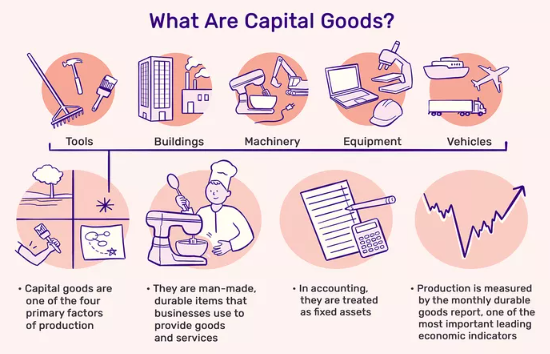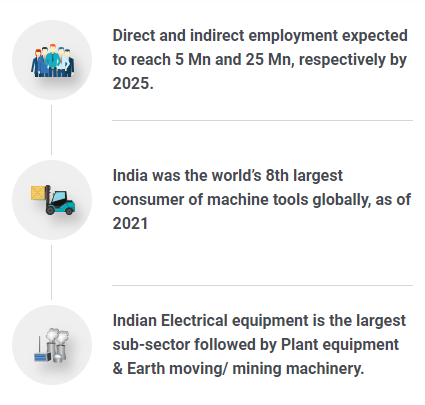7667766266
enquiry@shankarias.in
Why in news?
To seize India's Capital Goods in the Global Electronics Revolution, there is need to embrace the innovative spirit that drove the Industrial Revolution.
What is a capital goods sector?

|
|
Capital Goods |
Consumer Goods |
|
Definition |
They are physical assets that are used in production process to produce consumer goods. |
They are the finished products that consumers buy after the production process. |
|
Users |
Manufacturers |
Final consumers |
|
Examples |
Plant, property, equipment, etc., |
Milk, appliances, clothes, etc., |

References